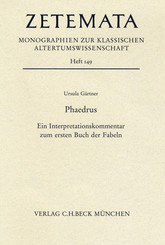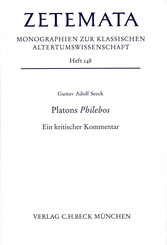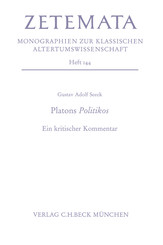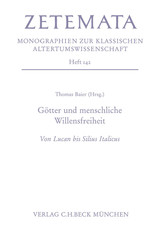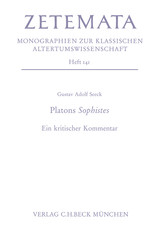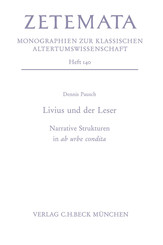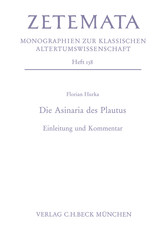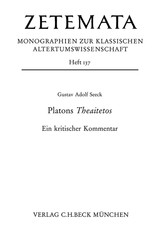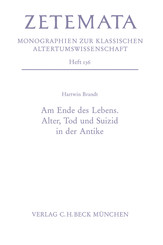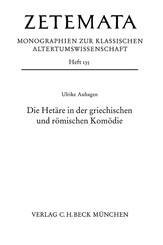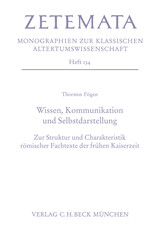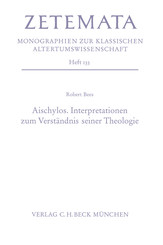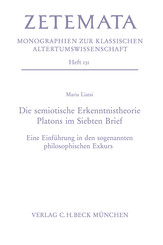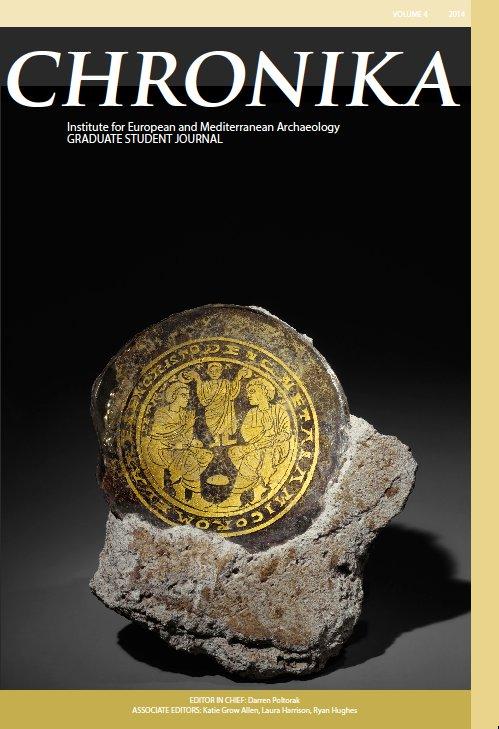[First posted in AWOL 15 November 2015, updated 12 October 2017]
NOMOI: A bibliographical web site for the study of ancient Greek law. Ancient Greek Law on the World Wide Web
NOMOI: A bibliographical web site for the study of ancient Greek law. Ancient Greek Law on the World Wide Web
Ilias Arnaoutoglou
Mark J. Sundahl
Mark J. Sundahl
Complete Bibliography July 2017 A-L, M-Z by authorAbbreviations Sources Fundamental Principles Law and Religion Inter-poleis Relations Crime and Punishment
Alphabetical Listing of NOMOI Database as at July 2017
Are your publications listed in our database?Submissions are welcome: Submit a Bibliography Entry
Additions January - June 2017SourcesOratorsApostolakis, K. (2017) “Pitiable dramas on the podium of the Athenian law courts” in Papaioannou, S., Serafim, A. & B. da Vela (eds) The theatre of justice. Aspects of performance in Greco-Roman oratory and rhetoric, 133-56, Leiden.Griffith-Williams, B. (2016) “Rational and emotional persuasion in Athenian inheritance cases” in Sanders, E. & M. Johncock (eds) Emotion and persuasion in classical antiquity, 41-55, Stuttgart.Harris, E. M. (2017) “How to “act” in an Athenian court: Emotions and forensic performance” in Papaioannou, S., Serafim, A. & B. da Vela (eds) The theatre of justice. Aspects of performance in Greco-Roman oratory and rhetoric, 223-42, Leiden.Maffi, A. (1985) «L’exetastikon eidos nella Rhetorica ad Alexandrum» in Pennacini, A. (ed) Retorica e storia nella cultura classica, 29-43, Bologna.Pasini, G. (2006) «L’exetastikon eidos della Retorica ad Alessandro e le sue corrispondenze nell’oratoria e in Aristotele» in Calboli Montefusco, L. (ed) Papers on Rhetoric VII, 181-202, Rome.Sanders, E. (2016) «Persuasion through emotions in Athenian deliberative oratory» in Sanders, E. & M. Johncock (eds) Emotion and persuasion in classical antiquity, 57-73, Stuttgart.Serafim, A. (2017) Attic oratory and performance, London.Worthington, I. (2017) “Audience reaction, performance and the exploitation of delivery in the courts and assembly” in Papaioannou, S., Serafim, A. & B. da Vela (eds) The theatre of justice. Aspects of performance in Greco-Roman oratory and rhetoric, 13-25, Leiden.AeschinesCarey, Chr. (2017) “Style, person, and performance in Aeschines’ prosecution of Timarchus” in Papaioannou, S., Serafim, A. & B. da Vela (eds) The theatre of justice. Aspects of performance in Greco-Roman oratory and rhetoric, 265-82, Leiden.Harris, E. M. (2017) “Applying the law about the law the award of crowns to magistrates (Aeschin. 3.9-31; Dem. 18.113-117): Epigraphic evidence for the legal arguments at the trial of Ctesiphon” ZPE 202, 105-17.Leão, D. F. (2009) “O sexo e a cidade: Um caso de prostituição masculine (Ésquines, Contra Timarco)” in Ramos, J. A., Fialho, M. C. & N. S. Rodrigues (eds) A sexualidade no mundo antico, 293-303, Porto.Pasini, G. (2011) «The exetastikon eidos of the Rh. Al. and parallels in Aeschines’ Against Timarchus and Demosthenes’ On the False Embassy” Rhetorica 29, 336-56.AndocidesAntiphonSchindel, U. (1979) Der Mordfall Herodes. Zur 5. Rede Antiphons, Göttingen.Vatri, A. (2017) “Public performance and the language of Antiphon’s speeches” in Papaioannou, S., Serafim, A. & B. da Vela (eds) The theatre of justice. Aspects of performance in Greco-Roman oratory and rhetoric, 304-20, Leiden.Demosthenes/ApollodorusCurado, A. L. (2017) „Emotion, life history and law: Demosthenes and the architecture of the speech Against Meidias“ in Leão, D. F. & G. Thür (eds) Symposion 2015. Vorträge zur griechischen und hellenistischen Rechtsgeschichte (Coimbra, 1.-4. September 2015), 303-24, Wien. (with a reply by M. Gagarin)Harris, E. M. (2017) “Applying the law about the law the award of crowns to magistrates (Aeschin. 3.9-31; Dem. 18.113-117): Epigraphic evidence for the legal arguments at the trial of Ctesiphon” ZPE 202, 105-17.Kapparis, K. (2017) “Narrative and performance in the speeches of Apollodoros” in Papaioannou, S., Serafim, A. & B. da Vela (eds) The theatre of justice. Aspects of performance in Greco-Roman oratory and rhetoric, 283-305, Leiden.Pasini, G. (2011) «The exetastikon eidos of the Rh. Al. and parallels in Aeschines’ Against Timarchus and Demosthenes’ On the False Embassy” Rhetorica 29, 336-56.Spatharas, D. (2017) “The mind’s theatre: Envy, hybrisand enargeia in Demosthenes’ Against Meidias” in Papaioannou, S., Serafim, A. & B. da Vela (eds) The theatre of justice. Aspects of performance in Greco-Roman oratory and rhetoric, 201-22, Leiden.Sullivan, J. (2003) “Demosthenes’ Areopagos legislation” CQ 53, 111-23.Taddei, A. (2007) “Una rissa nell’agorà (Demostene, ‘Contro Conone’)” Lexis 25, 285-99.DinarchusHypereidesGalatà, Fr. (2014) “Iperide e le orazioni per Cherefilo: Una rilettura del P. Oxy. 2686” Analecta Papyrologica 26, 107-21.Maltese, E. V. (1974) “Le orazioni “per Cherefilo” di Iperide e un nuovo frammento papiraceo del II sec.” Aegyptus54, 157-75.Oikonomides, A. N. (1978) “A new fragment of Hyperides Against Antias and his relation to the Cherefilus affair” ZPE 29, 41-42.IsaeusGriffith-Williams, Br. (2017) “Would I lie to you? Narrative and performance in Isaios 6” in Papaioannou, S., Serafim, A. & B. da Vela (eds) The theatre of justice. Aspects of performance in Greco-Roman oratory and rhetoric, 42-56, Leiden.IsocratesBouchet, Chr. (2015) “Isocrate, la Seconde Confédération maritime et l’Areopagitique” Historiká 5, 423-31.LycurgusLysiasCortés Gabaudán, Fr. (2017) “¿Seducción o prostitución? Lisias, Defensa por el homicidio de Eratostenes” Emerita 85, 27-48.Dunham, W. R. (2011) “Cold case files: The Athenian grain merchants 386 BC” Cato Journal 28, 495-514.Piovan, D. (ed) (2009) Lisia. Difesa dall’accusa di attentato alla democrazia, Roma.Viano, C. (2011) “Théorie éthique et pratique judiciaire: passions et délits passionels chez Platon, Aristote et Lysias” Metis 9, 101-21.EpicHomerCerri, G. (2013) “Giudici-rapsodi in Esiodo e Omero” AION35, 7-24.HesiodCerri, G. (2013) “Giudici-rapsodi in Esiodo e Omero” AION35, 7-24.Priou, A. (2014) “Hesiod: Man, law and cosmos” Polis (Exeter) 31, 233-60.TragedyAeschylusTelech, D. (2017) “Mercy at the Areopagus: A Nietzschean account of justice and joy in the Eumenides” in LaCroix, A. L., McAdams, R. H. & M. C. Nussbaum (eds) Fatal fictions. Crime and investigation in law and literature, 15-40, Oxford.EuripidesSophoclesBrezzi, Fr. (2014) «Antigone e le leggi. Diritto, etica e politica» RIFD91, 381-408.ComedyAristophanesBuis, E. J. (2015) “The comic oars of Athenian jurisdiction: Autodikiaand the manliness of maritime imperialism in Cloudcuckoville” Historiká 5, 459-78.Drumond, Gr. (2014) “Lei e liberdade em Assembleia de Mulheres de Aristofanes” Caliope 28, 9-32.Kanavou, N. (2016) «Sôphrosyne and justice in Aristophanes’ Wasps» G & R 63, 175-91.Markovits, El. (2012) “As if we were codgers: Flattery, parrhēsiaand ols man demos in Aristophanes’ Knights” Polis (Exeter) 29, 108-29.Sheppard, A. (2016) Aristophanes’ Ecclesiazusaeand the remaking of the patrios politeia” CQ 66, 463-83.MenanderPhilosophyAristotleAtack, C. (2015) “Aristotle’s pambasileia and the metaphysics of monarchy” Polis(Exeter) 32, 297-320.Balla, Chl. (2016) “To programma tes aristotelikes Synagoges Politeion kai to theoretiko tou hypobathro” Philosophia 46/2, 83-96.Bates, C. A. (2013) “Law and the rule of law and its place relative to politeiain Aristotle’s Politics” in Huppes-Gluysenaer, L. & N. M. M. S. Coelho (eds) Aristotle and the philosophy of law: theory, practice and justice, 59-75, Berlin.Bearzot, C. (2016) “La teoria aristotelica della giustizia: il V libro dell’Etica Nicomachea” Antiquorum Philosophia10, 94-107.Contreras. Seb. (2012) “La justicia en Aristóteles. Una revisión de las ideias fundamentales de Ethica Nicomachea» Agora 14, 63-80.Hurri, S. (2013) “Justice kata nomos and justice as epieikeia (legality and equity)” in Huppes-Gluysenaer, L. & N. M. M. S. Coelho (eds) Aristotle and the philosophy of law: theory, practice and justice, 149-61, Berlin.Könczöl, M. (2013) „Legality and equity in the Rhetoric. The smooth transition” in Huppes-Gluysenaer, L. & N. M. M. S. Coelho (eds) Aristotle and the philosophy of law: theory, practice and justice, 164-70, Berlin.Pelloso, C. (2016) „Giustizia corretiva e rapporti sinallagmatici tra dottrina etica e declinazioni positive“ Teoria e Storia del Diritto Privato 9, 1-68.Poddighe, El. (2016) „Giustizia e costituzione: scienza politica e intelligibilità dellastoria secondo Aristotele (EN V, 1134a25- 1135a8)“ Gerion 34, 77-101.Rapp, Chr. (2011) “Aristotelische Grundbegriffe in der Theorie der juridischen Argumentation“ Rechtstheorie 42, 383-415.Sancho Rocher, L. (2016) “Kerdos, philia and mesoi. Aristotle and the ways of preventing stasis” IncAnt 14, 143-74.Spano, A. (2016) “Aristotele, l’eforato e lo scontro politico a Sparta dopo Leuttra (Politica 11270 B6-35)” Sicilia Antiqua 13, 187-91.Vega, J. (2013) „Legal rules and epieikeia in Aristotle: Post-positivism rediscovered“in Huppes-Gluysenaer, L. & N. M. M. S. Coelho (eds) Aristotle and the philosophy of law: theory, practice and justice, 171-2011, Berlin.Viano, C. (2011) “Théorie éthique et pratique judiciaire: passions et délits passionels chez Platon, Aristote et Lysias” Metis 9, 101-21.Wallace, R. W. (2014) “Greek oligarchy, and the pre-Solonian Areopagos Council in [Aristotle] Ath. Pol. 2.2-8.4” Polis(Exeter) 31, 191-205.Plato - see also www.platosociety.orgDusenbury, D. L. (2017) Platonic legislations. An essay on legal critique in ancient Greece, Berlin.Lännström, A. (2013) “Socrates moral impiety and its role at the trial: A reading of Euthyphro6A” Polis (Exeter) 30, 31-48.Viano, C. (2011) “Théorie éthique et pratique judiciaire: passions et délits passionels chez Platon, Aristote et Lysias” Metis 9, 101-21.HistoryLoddo, L. (2016) “Cambiamenti costituzionali neiPhilippika di Teopompo di Chio” IncAnt 14, 175-206.HerodotusThucydidesKremmydas, Chr. (2017) “Ethos and logical argument in Thucydides’ assembly debates” in Papaioannou, S., Serafim, A. & B. da Vela (eds) The theatre of justice. Aspects of performance in Greco-Roman oratory and rhetoric, 92-113, Leiden.XenophonBianco, El. (2011) „Xenophon and the tradition on the strategoi in fourth-century Athens“Historiká 1/1, 39-60.Danzig, G. (2009) “Big boys, little boys: Justice and law in Xenophon’s Cyropaediaand Memorabilia” Polis 26, 242-66.Thommen, L. (2015) «Xenophon und die spartanische Nauarchie» Historiká 5, 313-20.LexicaOther literary sourcesLeão, D. F. (2016) “Consistency and criticism in Plutarch’s writings concerning the laws of Solon” in Opsomer, J., Roskam, G. & Fr. B. Titchener (eds) A versatile gentleman. Consistency in Plutarch’s writing, 243-54, Leuven.InscriptionsBeretta Liverani, M. (2013) “Il decreto ateniese per i Faseliti (IG i3 10) e le multe di 10.000 dracme nel V sec.” Historiká 3, 131-58.Cordano, F. (2016) “La doppia copia di un contratto “camarinese”” in Struffolino, St. (ed) Hemetera grammata. Scritti di epigraphia greca offerti a Teresa Alfieri Tonini, 219-26, Milano.Dickey, E. & Ph. Probert (2017) “Houses in which a serf living in the country does not reside: a reconsideration of Gortyn laws column 4, lines 31-37” in Willi, A. (ed) Sprachgeschichte und Epigraphik. Festgaben für Rudolph Wachter zum 60.Geburtstag, 57-81, Innsbruck.Harris, E. M. (2017) “Applying the law about the law the award of crowns to magistrates (Aeschin. 3.9-31; Dem. 18.113-117): Epigraphic evidence for the legal arguments at the trial of Ctesiphon” ZPE 202, 105-17.Peels, S. (2017) “Notes on IG ix 1 (2) 3: 718 (Foundation decree of Locrian colony at Naupactus)” ZPE 201, 110-6.Wallace, Sh. (2016) “The rescript of Philip III Arrhidaios and the two tyrannies at Eresos” Tyche 31, 239-58.Manuals – introductory essaysPepe, L. (2016) “Il diritto in Grecia” in Buongiorno, P., d’Alessio, R. & N. Rampazzo (eds) Diritti antichi, percorsi e confronti. I. Area mediterranea 1. Oriente, 253-329, Napoli.MethodologyBibliographiesArpaia, M. (2010) “Bibliografia sullo Scudo di Achille (1945-2008)” in D’Acunto, M. & R. Palmisciano (eds) Lo Scudo di Achille nell’Iliade.Esperienze ermeneutiche a confronto (Atti della giornata di studi, Napoli 12 maggio 2008), 225-32, Pisa.Fundamental principlesLegal conceptsAdamidis, V. (2017)Character Evidence in the Courts of Classical Athens.Rhetoric, Relevance and the Rule of Law, London.
Bates, C. A. (2013) “Law and the rule of law and its place relative to politeiain Aristotle’s Politics” in Huppes-Gluysenaer, L. & N. M. M. S. Coelho (eds) Aristotle and the philosophy of law: theory, practice and justice, 59-75, Berlin.Dimopoulou, Ath. (2017) ““Chalkideas eleutherous kai autonomous ontas” (IG ii2 44): He ennoia tes “autonomias” sta archaioellenika psephismata” in Ioannes K.Karakostas, philias kai matheteias charin, 243-58, Athena.Gowder, P. (2014) “Trust and commitment: How Athens rebuilt the rule of law” in Corradetti, C., Eisikovitz, N. & J. Rotondi (eds.) Theorizing Transitional Justice,225-36, Farnham.Gowder, P. (2015) “What the Laws demand of Socrates --- and of us” The Monist98, 360-74.Hurri, S. (2013) “Justice kata nomos and justice as epieikeia (legality and equity)” in Huppes-Gluysenaer, L. & N. M. M. S. Coelho (eds) Aristotle and the philosophy of law: theory, practice and justice, 149-61, Berlin.Könczöl, M. (2013) „Legality and equity in the Rhetoric. The smooth transition” in Huppes-Gluysenaer, L. & N. M. M. S. Coelho (eds) Aristotle and the philosophy of law: theory, practice and justice, 164-70, Berlin.Lambrini, P. (2013) “Il dolo tra Grecia e Roma” in Palma, A. (ed) Civitas et civilitas. Studi in onore di Fr. Guizzi, II, 469-81, Torino.Oliveira, R. R. (2013) Pólis e nómos: O problema da lei no pensiamento greco, São Paulo.Vega, J. (2013) „Legal rules and epieikeia in Aristotle: Post-positivism rediscovered“ in Huppes-Gluysenaer, L. & N. M. M. S. Coelho (eds) Aristotle and the philosophy of law: theory, practice and justice, 171-201, Berlin.Wallace, R. W. (2017) “Equality, the demos, and the law in archaic Greece” in Leão, D. F. & G. Thür (eds) Symposion 2015.Vorträge zur griechischen und hellenistischen Rechtsgeschichte (Coimbra, 1.-4. September 2015), 1-32, Wien. (with a reply by L. Pepe and an additional note by M. Dreher)Dispute settlement and litigationOrigins of lawWriting and codificationThemis, Dike, Thesmos, Nomos, PsephismaPelloso, C. (2016) “Coscienza nomica e scienza giuridica: Un confront tra il modelli ‘autoritativo’ ateniese e il modello ‘anarchico’ romano” Revista General de Derecho Romano 26, 1-47.Trierweiler, S. (2017) «La conception et l’expression d’un droit structuré dans la société homérique à travers les notions de themis et dikê» Archimède 4 (en ligne) http://archimede.unistra.fr/revue-archimede/archimede-4-2017Law and legislatorsMele, A. (2016) “Tra Zaleuco, Caronda e Parmenide: Legislatori e filosofi in Magna Grecia e Sicilia” in Poleis e politeiai nella Magna Grecia arcaica e classica (Atti del cinquantatreesimo convegno di studi sulla Magna Grecia, Taranto 26-29 settembre 2013), 233-67, Taranto.de Sensi Sensito, G. (2016) «Qualche osservazione sui legislatori d’ Occidente nella prospettiva pitagorica e storiografica del IV sec. a. C.» in Poleis e politeiai nella Magna Grecia arcaica e classica (Atti del cinquantatreesimo convegno di studi sulla Magna Grecia, Taranto 26-29 settembre 2013), 269-87, Taranto.LycurgusDracoSolonAllan, W. (2017) “Solon the peacemaker” in Moloney, E. P. & M. S. Williams (eds) Peace and reconciliation in the classical world, 15-26, Abingdon.Bartzoka, Al. (2012) „Solon fondateur de la Boule des Quatre Cents?“Historiká 2, 127-56.Foxhall, L. (1997) „A view from the top: evaluating the Solonian property classes“ in Mitchell, L.. J. Rhodes (eds) The development of the polis in archaic Greece, 61-74, London.French, A. (1956) “The economic background to Solon’s reforms” CQ 6, 11-25.Gagliardi, L. (2014) “Das solonische Gesetz über Erbschaft: Vorschrift über Testamentum oder Adoption?” ZRG 131, 23-40.Gallant, Th. (1982) “Agricultural systems, land tenure, and the reforms of Solon” ABSA 77, 111-24.Leão, D. F. (2016) “Consistency and criticism in Plutarch’s writings concerning the laws of Solon” in Opsomer, J., Roskam, G. & Fr. B. Titchener (eds) A versatile gentleman. Consistency in Plutarch’s writing, 243-54, Leuven.Pelloso, C. (2017) “Ephesis eis to dikasterion. Remarks and speculations on the legal nature of the Solonian reform” in Leão, D. F. & G. Thür (eds) Symposion 2015.Vorträge zur griechischen und hellenistischen Rechtsgeschichte (Coimbra, 1.-4. September 2015), 33-54, Wien. (with a reply by M. Dreher)Rosivach, V. (2002) “The requirements for the Solonic classes in Aristotle, AP 7.4” Hermes 130, 36-47.Sancisi-Weerdenberg, H. (1993) “Solon’s hektemoroi and Pisistratid dekatemoroi” in Sancisi-Weerdenberg, H., van der Spek, R. J., Teitler, W. C. & H. T. Wallinga (eds) De agricultura: in memoriam Pieter Willem de Neeve (1945-1990), 13-30, Amsterdam.Sciacchitano, R. (2014) „Su alcune leggi di Solone per la tutela die ceti meno abbienti (F 23d; 55-57; 60-64; 75; 78 Ruschenbusch)“ Incidenza dell’Antico 12, 123-40.Yamauchi, E. (1980) „Two reformers compared: Solon of Athens and Nehemiah of Jerusalem” in Rendsburg, G., Adler, R., Arfa, M. & N. H. Winter (eds) The Bible world. Essays in honour of Cyrus S. Gordon, 269-92, New York.Interpretation of lawsHuman and fundamental rightsCarter, D. M. (2013) “Republicanism, rights and democratic Athens” Polis (Exeter) 30, 73-91.Relation of Greek laws to other legal systemsLewis, D. (2017) «Making law grip: inequality, injustice, and legal remedy in Solonian Attica and ancient Israel» in Xydopoulos, I., Vlassopoulos, K. & E. Tounta (eds) Violence and community. Law, space and identity in the ancient eastern Mediterranean world, 28-49, London.Nielsen, F. A. J. (2014) «Israel the antithesis of Hellas: enslavement, exile and return in the Greek Solon tradition and the Hebrew Bible» in Thompson, T. L. & P. Wadjenbaum (eds) The Bible and Hellenism: Greek influence on Jewish and early Christian literature, 175-86, London.Pelloso, C. (2016) “Coscienza nomica e scienza giuridica: Un confronto tra il modelli ‘autoritativo’ ateniese e il modello ‘anarchico’ romano” Revista General de Derecho Romano 26, 1-47.Sofia, A. (2011) “I legislatori di Locri e la letteratura sapienzale egizia: idee di Stato e di giustizia a confronto» Aegyptus 91, 295-302.Wolff, H. J. (2013) “Diritto Greco – diritto tolemaico” Dike 16, 97-122.(original entries in Lexicon der Alten Welt, 68-86, Zürich 1965, transl. by A. Maffi)Yamauchi, E. (1980) „Two reformers compared: Solon of Athens and Nehemiah of Jerusalem” in Rendsburg, G., Adler, R., Arfa, M. & N. H. Winter (eds) The Bible world. Essays in honour of Cyrus S. Gordon, 269-92, New York.Conflict of lawsJustice and lawContreras. Seb. (2012) “La justicia en Aristóteles. Una revisión de las ideias fundamentales de Ethica Nicomachea» Agora 14, 63-80.Danzig, G. (2009) “Big boys, little boys: Justice and law in Xenophon’s Cyropaediaand Memorabilia” Polis 26, 242-66.Hansen, P. J. (2015) “Thrasymachus and his attachment to justice” Polis (Exeter) 32, 344-68.Natural lawLegal terminologyPolisAnastasiadis, V. I. (1999) “Political “parties” in Athenian democracy: A modernizing topos” Arethusa 32, 313-35.Cecchet, L. (2009) «Gēs anadasmos. A real issue in the archaic and classical polis?” Athenaeum55, 185-98.Coccioli, S. A. (2015) «Il basileus e ilphigas. Società e istituzioni a Taranto in età tardoarcaica» Studi di antichità 13, 7-32.Lendon, J. E. (2001) “Voting by shouting in Sparta” in Tylawsky, E. & C. Weiss (eds) Essays in honor of Gordon Williams. Twenty-five years at Yale, 169-75, New Haven.Mackil, E. (2017) “Property claims and state formation in the archaic Greek world” in Ando, Cl. & S. Richardson (eds) Ancient states and infrastructural power: Europe, Asia, and America, 63-90, Philadelphia.Sheppard, A. (2016) Aristophanes’ Ecclesiazusaeand the remaking of the patrios politeia” CQ 66, 463-83.Civic subdivisionsGrote, O. (2016) Die griechischen Phylen. Funktion – Entstehung – Leistungen, Stuttgart.ArchivesConstitutionsCuniberti, G. (2000) «Lakedaimonion politeia: priorità e originalità nel dibattito sulle politeiai– modello di Sparta e Creta» SIFC18, 99-111.Frisone, Fl. (2016) “Esperienze politiche ed assetti costituzionali nelle poleis magnogreche di età arcaica: una riflessione” in Poleis epoliteiai nella Magna Grecia arcaica e classica (Atti del cinquantatreesimo convegno di studi sulla Magna Grecia, Taranto 26-29 settembre 2013), 291-301, Taranto.Herrmann-Otto, E. (1998) «Verfassung und Gesellschaft Spartas in der Kritik des Aristoteles» Historia 47, 18-40.Loddo, L. (2016) “Cambiamenti costituzionali nei Philippika di Teopompo di Chio” IncAnt 14, 175-206.Poddighe, E. (2016) “Giustizia e costituzione: scienza politica e intelligibilità della storia secondo Aristotele (EN, V, 1134a – 1135a 8)” Gerion 34, 77-101.Basileia (Kingship)Atack, C. (2015) “Aristotle’s pambasileia and the metaphysics of monarchy” Polis(Exeter) 32, 297-320.Guizzi, F. (2010) “Ho visto un re … La regalità nello Scudo di Achille” in D’Acunto, M. & R. Palmisciano (eds) Lo Scudo di Achille nell’Iliade. Esperienze ermeneutiche a confronto (Atti della giornata di studi, Napoli 12 maggio 2008), 83-95, Pisa.Kõiv, M. (2016) «Basileus, tyrannos and polis.The dynamics of monarchy in early Greece» Klio 98, 1-89.Oligarchia (Oligarchy)Wallace, R. W. (2014) “Greek oligarchy, and the pre-Solonian Areopagos Council in [Aristotle] Ath. Pol. 2.2-8.4” Polis(Exeter) 31, 191-205.Demokratia (Democracy)Rhodes, P. J. (2016) “Demagogues and demos in Athens” Polis (Exeter) 33, 243-64.Rhodes, P. J. (2016) “Boiotian democracy?” in Gartland, S. D. (ed) Boiotia in the fourth century B.C., 59-64, Philadelphia.Tyrannis (Tyranny)MagistratesBianco, El. (2011) „Xenophon and the tradition on the strategoiin fourth-century Athens“Historiká 1/1, 39-60.Christien, J. (2015) «L’institution spartiate des navarques» Historiká 5, 321-52.Huxley, G. (1992) «Venal ephors in Aristotle, Politics 1270b 12» RIFC 120, 162-4.Pischedda, El. (2016) “I magistrate e la durata del mandato al tempo di Eubulo” Historiká6, 61-82.Spano, A. (2016) “Aristotele, l’eforato e lo scontro politico a Sparta dopo Leuttra (Politica 11270 B6-35)” Sicilia Antiqua 13, 187-91.Thommen, L. (2015) «Xenophon und die spartanische Nauarchie» Historiká 5, 313-20.Nomothesia (Legislation)Cecchet, L. (2016) «The Athenian nomos argias.Notes for a possible interpretation” IncAnt14, 117-42.Cohen, E. E. (2017) “Athenian legislation limiting male prostitutes’ political rights” in Leão, D. F. & G. Thür (eds) Symposion 2015. Vorträge zur griechischen und hellenistischen Rechtsgeschichte(Coimbra, 1.-4. September 2015), 365-86, Wien. (with a reply by A. Lanni)Flament, Chr. (2016) “À propos d’un aspect méconnu de la législation minière athénienne au IVe s. av. n. ère» LAC 85, 37-44.Stasis, exile, reconciliationBianco, E. (2013) «Concordia senza homonoia» Historiká 3, 287-322.Edwards, M. J. (2017) “Peace and reconciliation, Athenian-style” in Moloney, E. P. & M. S. Williams (eds) Peace and reconciliation in the classical world, 248-54, Abingdon.Gray, B. (2017) “Reconciliation in late classical and post-classical Greek cities: a question of peace and peacefulness?” in Moloney, E. P. & M. S. Williams (eds) Peace and reconciliation in the classical world, 66-85, Abingdon.Grisanzio,El. (2016) „Sortir de la guerre civile. Les traités de reconciliation athéniens de 403 et 401 av. J.-C. et la recomposition de la cite divisée» IncAnt 14, 317-32.Koulakiotis, E. (2017) „Reintegrating the exiles: violence, urban landscape and memory in early Hellenistic Tegea“ in Xydopoulos, I., Vlassopoulos, K. & E. Tounta (eds) Violence and community. Law, space and identity in the ancient eastern Mediterranean world, 159-80, London.Lehmann, G. A. (2015) Alexander der Große und die “Freiheit der Hellenen”. Studien zu der antiken historiographischen Überlieferung und den Inschriften der Alexander-Ära, Berlin.Loddo, L. (2016) „The kathodos of Tegea’s exiles: Civic laws and royal diagrammata“ in Bearzot, C. & Fr. Landucci (eds) Alexander’s legacy (Atti del convegno, Università Cattolica del Sacro Cuore, Milano 2015), 237-56, Roma.Morakis, A. (2015) „The gamoroi and the history of archaic Syracuse: a new examination” Studi di Antichità 13, 33-50.Rzepka, J. (1997) “Stasis w hellenistycznych Atenach w latach 322-287” Przeglad Historyczny88/1, 1-30.Sancho Rocher, L. (2016) “Kerdos, philia and mesoi. Aristotle and the ways of preventing stasis” IncAnt 14, 143-74.Wallace, Sh. (2016) “The rescript of Philip III Arrhidaios and the two tyrannies at Eresos” Tyche 31, 239-58.OstracismPolis finances, taxation, coinageCapano, Ant. (2012) «Le simmorie di Demostene: la trierarchia tra imposta e liturgia» Historiká 2, 157-70.Migeotte, L. (2014) Les finances des cités grecques aux périodes classique et hellénistique, Paris.StatusAge classesCitizenshipBlok, J. (2017) Citizenship in classical Athens, Cambridge.Iriarte, A. (2015) «Semblanzas de demi-ciudadanías griegas. Sobre crios, ancíanos y féminas» in Iriarte, A. & L de Nazaré Ferreira (eds) Idades e género na literatura e na arte da Grécia antiga, 9-30, Coimbra.Leão, D. F. (2010) “Cidadania, autoctonia e posse de terra na Atenas democratica” Cadmo 20, 445-64.Leão, D. F. (2009) “O sexo e a cidade: Um caso de prostituição masculine (Ésquines, Contra Timarco)” in Ramos, J. A., Fialho, M. C. & N. S. Rodrigues (eds) A sexualidade no mundo antico, 293-303, Porto.PhratriesMetics (Resident foreigners)Zaykov, A. V. (2005) “About the status of the Lakedaimonian perioikoi II” Issedon 3, 69-85.Zaykov, A. V. (2003) “About the status of the Lakedaimonian perioikoi I” Issedon 2, 16-44.XenoiFreedmenChillet, Cl. (2017) “Exeleutherikos: une erreur de traduction ou de droit sur les affrnachis?” Mnemosyne70, 512-20.Velissaropoulos-Karakostas, J. (2017) “Note sur les phialai exeleutherikai” in Leão, D. F. & G. Thür (eds) Symposion 2015. Vorträge zur griechischen und hellenistischen Rechtsgeschichte (Coimbra, 1.-4. September 2015), 75-98, Wien. (with a reply by A. C. Scafuro)Slaves – see also Bibliographie zur antiken Sklavereiwww.admainz.de/index.php?id=32Cartledge, P. (2002) “The political economy of Greek slavery” in Cartledge, P., Cohen, E. E. & L. Foxhall (eds) Money, labour and land. Approaches to the economies of ancient Greece, 156-66, Abingdon. (witha reply by M. Jameson, 167-75)Dickey, E. & Ph. Probert (2017) “Houses in which a serf living in the country does not reside: a reconsideration of Gortyn laws column 4, lines 31-37” in Willi, A. (ed) Sprachgeschichte und Epigraphik. Festgaben für Rudolph Wachter zum 60. Geburtstag, 57-81, Innsbruck.Nielsen, F. A. J. (2014) «Israel the antithesis of Hellas: enslavement, exile and return in the Greek Solon tradition and the Hebrew Bible» in Thompson, T. L. & P. Wadjenbaum (eds) The Bible and Hellenism: Greek influence on Jewish and early Christian literature, 175-86, London.Reger, G. (2000) „Enslavement and manumission in ancient Greece“ in Lang, B. (ed) Race and racism in theory and practice, 99-110, Lanham.Women and law – see alsowww.stoa.org/diotimaIriarte, A. (2015) «Semblanzas de demi-ciudadanías griegas. Sobre crios, ancíanos y féminas» in Iriarte, A. & L de Nazaré Ferreira (eds) Idades e género na literatura e na arte da Grécia antiga, 9-30, Coimbra.Lagger, U. (2016) „«Wie doch scheußlischer nichts und hündischer als Frau ist». Antike Frauen jenseits von Gesetz und Ordnung“ in Frass, M., Graßl, H. & G. Nightingale (eds) Akten des 15. Österreichischen Althistorikertages (Salzburg, 20.-22. November 2014), 119-30, Salzburg.AssociationsTaddei, A. (2007) “Una rissa nell’agorà (Demostene, ‘Contro Conone’)” Lexis25, 285-99.Family and inheritanceCantarella, E. (2017) “Gerotrophia. A controversial law” in Leão, D. F. & G. Thür (eds) Symposion 2015. Vorträge zur griechischen und hellenistischen Rechtsgeschichte (Coimbra, 1.-4. September 2015), 55-74, Wien. (witha reply by D. F. Leão)
Dillon, M. (2017) “Legal (and customary?) approachesto the disabled in ancient Greece” in Laes, Chr. (ed) Disability in antiquity, 167-81, London.
Griffith-Williams, B. (2016) “Rational and emotional persuasion in Athenian inheritance cases” in Sanders, E. & M. Johncock (eds) Emotion and persuasion in classical antiquity, 41-55, Stuttgart.HouseholdKinshipGuardianshipSciacchitano, R. (2014) „Su alcune leggi di Solone per la tutela die ceti meno abbienti (F 23d; 55-57; 60-64; 75; 78 Ruschenbusch)“ Incidenza dell’Antico 12, 123-40.MarriageDuce Pastor, E. (2017) “Matrimonio legitimo, poder familiar: el matrimonio en la Grecia antica” in Formas, manifestaciones y estructuras del poder politico en el Mundo Antiguo, 287-302, Madrid.DowryDivorceIllegitimacyAdoptionGagliardi, L. (2014) “Das solonische Gesetz über Erbschaft: Vorschrift über Testamentum oder Adoption?” ZRG 131, 23-40.WillsGagliardi, L. (2014) “Das solonische Gesetz über Erbschaft: Vorschrift über Testamentum oder Adoption?” ZRG 131, 23-40.Succession ab intestatoEpiklerosContractual and property relationsZelnick-Abramovitz, R. (2015) “Whose grave is this? The status of grave plots in ancient Greece” Dike 18, 51-95.ObligationCantarella, E. (2014) “La garanzia delle obbligazioni in Omero” in Bombardieri, L., Braccini, T. & S. Romani (eds) Il trono variopinto: figure e forme della dea dell’ amore, vii-ix, Alessandria.ContractEnktesisSaleCordano, F. (2016) “La doppia copia di un contratto “camarinese”” in Struffolino, St. (ed) Hemetera grammata. Scritti di epigraphia greca offerti a Teresa Alfieri Tonini, 219-26, Milano.LeasesMortgages and securityServitudesLoanEndowmentsLocatioOther kinds of contractsTrade and financeLytle, E. (2016) “Chaerephilus & Sons: Vertical integration, classical Athens and the Black Sea fish trade” Ancient Society 46, 1-26.Maffi, A. (2017) “Riflessioni su dikai emporikai e prestito marittimo” in Leão, D. F. & G. Thür (eds) Symposion 2015. Vorträge zur griechischen und hellenistischen Rechtsgeschichte (Coimbra, 1.-4. September 2015), 209-32, Wien. (with a response by M. Sundahl)Woolmer, M. (2015) “Emporoi kai naukleroi: Redefining commercial roles in classical Greece” Journal of Ancient History 3, 250-72.Commercial lawMaritime lawBanksProcedurePelloso, C. (2017) “Ephesis eis to dikasterion. Remarks and speculations on the legal nature of the Solonian reform” in Leão, D. F. & G. Thür (eds) Symposion 2015.Vorträge zur griechischen und hellenistischen Rechtsgeschichte (Coimbra, 1.-4. September 2015), 33-54, Wien. (with a reply by M. Dreher)ArbitrationCourtsAreopagosWallace, R. W. (2014) “Greek oligarchy, and the pre-Solonian Areopagos Council in [Aristotle] Ath. Pol. 2.2-8.4” Polis(Exeter) 31, 191-205.Procedures (Dikai– Graphai)Flament, Chr. (2016) “À propos d’un aspect méconnu de la législation minière athénienne au IVe s. av. n. ère» LAC 85, 37-44.Maffi, A. (2017) “Riflessioni su dikai emporikai e prestito marittimo” in Leão, D. F. & G. Thür (eds) Symposion 2015. Vorträge zur griechischen und hellenistischen Rechtsgeschichte (Coimbra, 1.-4. September 2015), 209-32, Wien. (with a response by M. Sundahl)Procedures (Extraordinary)AntidosisAntigrapheApagogeApographeDiadikasiaDokimasiaEisangeliaEndeixisEphegesisParagraphePhasisProboleSkepsisFamous trialsLännström, A. (2013) “Socrates moral impiety and its role at the trial: A reading of Euthyphro6A” Polis (Exeter) 30, 31-48.Ober, J. (2017) “The trial of Socrates as a political trial: Explaining 399 BCE” in Meierhenrich, J. & D. O. Pendas (eds) Political trials in theory and history, 65-87, Cambridge.Oranges, A. (2016) “Anti-Macedonian feelings on trial: the lawsuits against Lycurgus” in Bearzot, C. & Fr. Landucci (eds) Alexander’s legacy (Atti del convegno, Università Cattolica del Sacro Cuore, Milano 2015), 257-78, Roma.PersonnelProofsWitnessesTorture (Basanos)OathsAvramovic, S. (2011) “Religion and law. Oath in ancient Greek litigation” Journal of classical studies Matica Srpska 13, 21-50. (inSerbian)EnforcementCrime and punishmentCanevaro, M. (2017) „How to cast a criminal out of Athens: law and territory in archaic Atttica“ in Xydopoulos, I., Vlassopoulos, K. & E. Tounta (eds) Violence and community. Law, space and identity in the ancient eastern Mediterranean world, 50-71, London.Rubinstein, L. (2017) “Reward and deterrence in classical and Hellenistic enactments” in Leão, D. F. & G. Thür (eds) Symposion 2015.Vorträge zur griechischen und hellenistischen Rechtsgeschichte(Coimbra, 1.-4. September 2015), 419-60, Wien. (with a reply by I. Arnaoutoglou)Viano, C. (2011) “Théorie éthique et pratique judiciaire: passions et délits passionels chez Platon, Aristote et Lysias” Metis 9, 101-21.HomicideCortés Gabaudán, Fr. (2017) “¿Seducción o prostitución? Lisias, Defensa por el homicidio de Eratostenes” Emerita 85, 27-48.Rosivach, V. (2017) «Euthyphron’s prosecution on his father in the Euthyphron» CPh 112, 232-8.HybrisPerrone, D. (2012/2013) “Acerca de la hybris socrática como ‘prostitución de sí mismo’” Ordia Prima 11/12, 19-42.Sexual offencesCortés Gabaudán, Fr. (2017) “¿Seducción o prostitución? Lisias, Defensa por el homicidio de Eratostenes” Emerita 85, 27-48.Simoes Rodrigues, N. (2015) «Problematica da prostituição masculina na Atenas clássica» in Iriarte, A. & L de Nazaré Ferreira (eds) Idades e género na literatura e na arte da Grécia antiga, 129-66, Coimbra.TheftOther offencesPenaltiesAtimiaConfiscation of propertyDeath penaltyBearzot, C. (2015) «La violence de l’Etat. La condamnation à mort sans jugement dans la Grèce ancienne» Archimède (en ligne) 2, 150-9. http://archimede.unistra.fr/revue-archimede/archimede-2-2015/archimede-2-2015-varia-la-violence-de-letatEpobeliaImprisonmentParakataboleEnvironment and lawClement, J. (2014) «Le droit et l’animal chez les anciens: l’État, le cheval de guerre et le cavalier aux IVe – IIIe siècles av. J. – C.» in de Mari, E. & D. Taurisson-Mouret (eds) Ranger l’animal: L’impact environnemental de la norme en milieu contraint II. Exemples de droit colonial et analogies contemporaines, 86-99, Paris.Faraguna, M. (2017) “Water rights in archaic and classical Greek cities” in Leão, D. F. & G. Thür (eds) Symposion 2015. Vorträge zur griechischen und hellenistischen Rechtsgeschichte (Coimbra, 1.-4. September 2015), 387-418, Wien. (with a reply by A. Dimopoulou)Religion and lawTodd, S. C. (2017) “Death and religion in Athenian law: identifying pollution?” in Leão, D. F. & G. Thür (eds) Symposion 2015. Vorträge zur griechischen und hellenistischen Rechtsgeschichte(Coimbra, 1.-4. September 2015), 325-64, Wien. (with a reply by D. D. Phillips)Asebeia (Impiety)Asylia(Inviolability)Defixiones(Curses)Leges sacrae(sacred laws)Bouffier, S. (2015) «La lex sacra: une loi contre la malédiction? Pratiques magiques à Sélinonte au Ve siècle av. J.-C.” in Iannucci, A., Muccioli, F. & M. Zaccarini (eds) La città inquieta. Selinunte tra lex sacra e defixiones, 218-37, Milano.Georgoudi, St. (2016) “L’écriture en action dans des règlements religieux des cités grecques” Mètis 14, 209-44.Inter-poleis relationsBayliss, A. (2017) “Once an ally, always an ally: Sparta’s approach to policing the oaths of her allies in the late fifth and early fourth centuries” in Moloney, E. P. & M. S. Williams (eds) Peace and reconciliation in the classical world, 160-77, Abingdon.Lytle, E. (2016) “Status beyond law: ownership, access and the ancient Mediterranean” in Bekker-Nielsen, T. & R. Gertwagen (eds) The inland seas. Towards an ecohistory of the Mediterranean and the Black Sea, 107-36, Stuttgart.DiplomacyInternational arbitrationCarty, A. (2017) “International arbitration in archaic Greece” in Moloney, E. P. & M. S. Williams (eds) Peace and reconciliation in the classical world, 148-59, Abingdon.Leagues - FederationsBouchet, Chr. (2015) “Isocrate, la Seconde Confédération maritime et l’Areopagitique” Historiká 5, 423-31.Pascual Gonzalez, J. (2017) “El koinonfocidio en época helenística (346-146 a.C.): pervivencia institucional y evolución histórica” in Formas, manifestaciones y estructuras del poder politico en el Mundo Antiguo, 7-30, Madrid.Löbel, Y. (2014) Die Poleis der bundenesstaatlichen Gemeinwesen im antiken Griechenland.Untersuchungen zum Machtverhältniss zwischen Poleis und Zentralgewalten bis 167 v. Chr., Alessandria.Metropoleis and coloniesProxeniaTreaties – SymbolaFigueira, Th. J. (2016) „Defence and deterrence in the context of the foundation of the Delian League“ in Soares, C., Fialho, M. & Th. Figueira (eds) Pólis/cosmópolis: identidades globais & locais, 17-41, Coimbra.


























